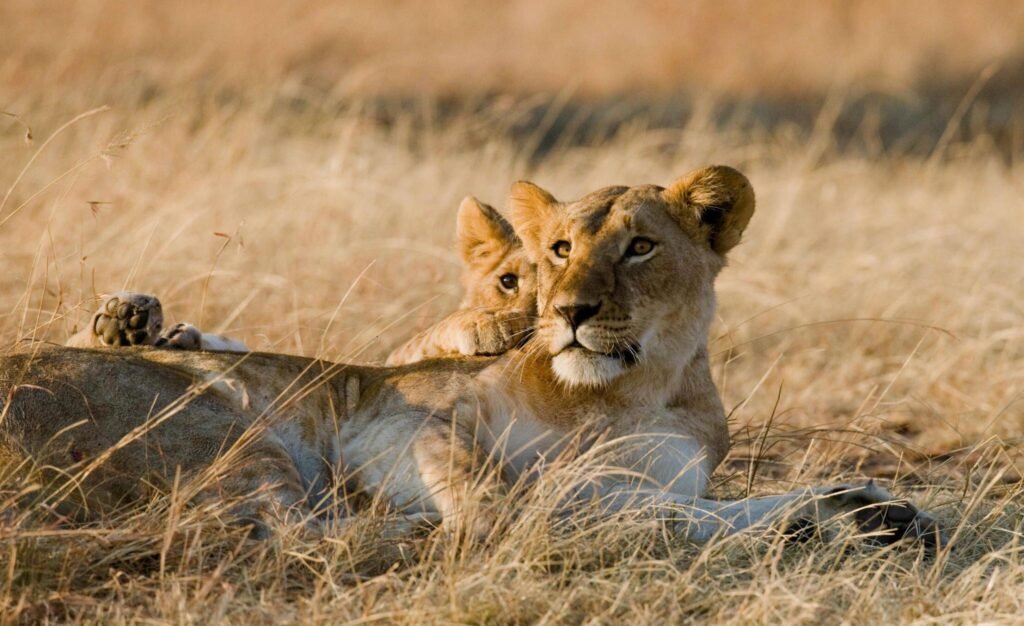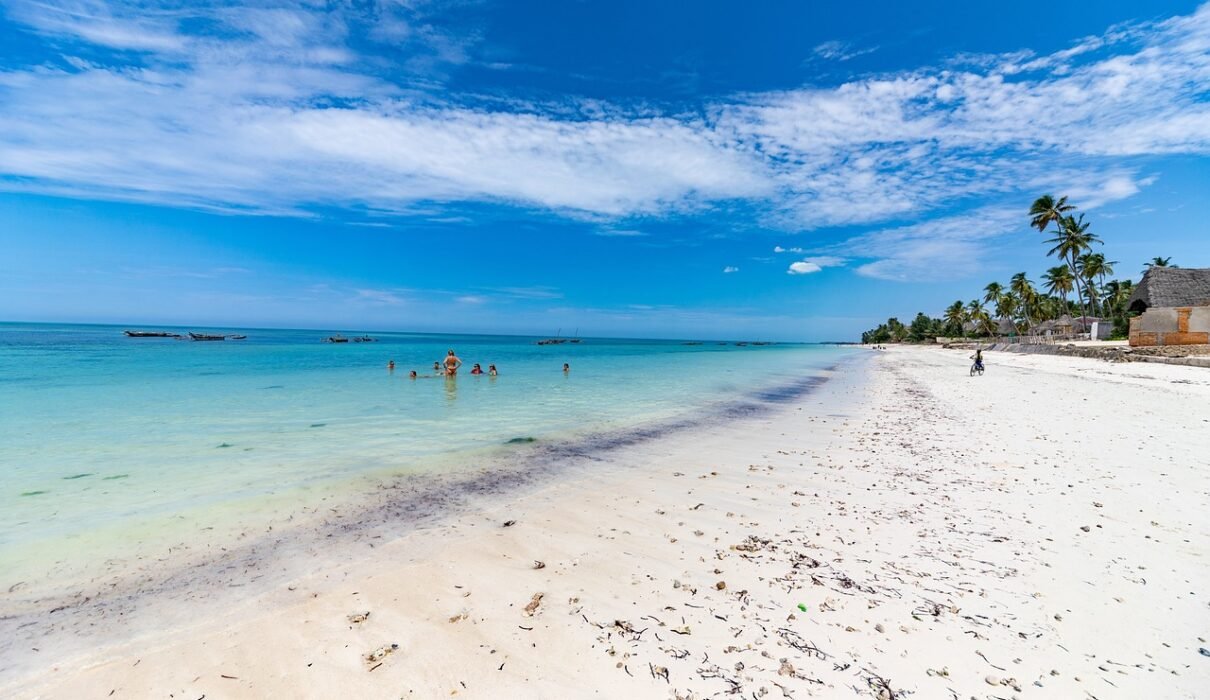After successfully reaching the summit of Mount Kilimanjaro, you’ll likely be looking for some well-deserved rest and relaxation, or perhaps you’re eager to explore more of Tanzania’s natural beauty. The good news is that Tanzania offers a wide range of exciting activities and stunning destinations for adventurers looking to unwind or continue their journey. From wildlife safaris to tropical beach escapes, here are the best things to do after climbing Kilimanjaro.
Plan your Kilimanjaro adventure here.

1. Relax on the Beaches of Zanzibar
One of the most popular post-climb destinations is Zanzibar, a tropical island paradise just off the coast of Tanzania. After the physical challenge of climbing Kilimanjaro, there’s nothing better than sinking your feet into the soft, white sands and swimming in the crystal-clear waters of the Indian Ocean.
- Top Beaches: Nungwi Beach, Kendwa Beach, and Paje Beach are all great options for relaxation.
- Activities: Snorkeling, diving, sunset dhow cruises, and spice tours are popular on the island.
Discover more about Zanzibar’s best beaches here.
2. Go on a Safari in the Serengeti National Park
If you’re still craving adventure after Kilimanjaro, a safari in the Serengeti National Park is the perfect way to continue your journey. The Serengeti is one of the world’s most famous wildlife reserves and is home to the Big Five (lion, leopard, elephant, rhino, and buffalo) as well as the Great Migration—a spectacular movement of wildebeest and zebras.
- Safari Highlights: Spotting the Big Five, witnessing the Great Migration (June to October), and enjoying a hot air balloon safari over the Serengeti.
Learn more about Serengeti safaris here.
3. Explore Ngorongoro Crater
The Ngorongoro Crater, a UNESCO World Heritage Site, is another must-visit after your Kilimanjaro climb. Formed by a collapsed volcano, the crater is a natural wonder filled with diverse wildlife. The enclosed ecosystem allows visitors to see a wide variety of animals, including rhinos, lions, and flamingos, all in a relatively small area.
- Best Time to Visit: The dry season from June to September offers the best wildlife viewing opportunities.
- Wildlife Highlights: Rhinos, lions, elephants, and massive flocks of flamingos on the crater lakes.
Discover more about Ngorongoro Crater safaris.
4. Take a Trip to Tarangire National Park
Known for its majestic baobab trees and large elephant herds, Tarangire National Park is an excellent destination for those looking for a more off-the-beaten-path safari experience. Located just a few hours from Arusha, Tarangire is quieter than other parks but offers incredible wildlife viewing, particularly during the dry season when animals gather near the park’s river.
- Wildlife to See: Elephants, giraffes, zebras, and over 550 species of birds.
- Why Visit: Fewer crowds and a more intimate safari experience.
Learn more about visiting Tarangire National Park.
5. Visit the Maasai Villages for a Cultural Experience
For a deeper cultural experience after your Kilimanjaro climb, consider visiting a Maasai village. The Maasai are one of Tanzania’s most well-known tribes, famous for their distinctive customs and brightly colored attire. A visit to their village offers a unique opportunity to learn about Maasai traditions, including their dances, crafts, and pastoral way of life.
- Cultural Insight: Learn about Maasai culture, daily life, and the importance of cattle to their community.
- Activities: Participate in traditional Maasai ceremonies, learn about their crafting skills, and take part in cultural exchanges.
Discover more about Maasai cultural tours here.
6. Go Wildlife Spotting in Lake Manyara National Park
Lake Manyara National Park is famous for its tree-climbing lions and its namesake, Lake Manyara, which is home to thousands of flamingos and other bird species. The park is smaller than other reserves in Tanzania, but it offers a diverse range of habitats, from dense forests to open savannas.
- Highlights: Tree-climbing lions, large populations of flamingos, and hot springs known as Maji Moto.
- Best Time to Visit: During the dry season (June to October) for easier wildlife spotting or the wet season (November to April) for birdwatching.
Learn more about Lake Manyara’s unique wildlife and ecosystem.
7. Soak in the Hot Springs of Chemka Oasis
If you’re looking for a way to relax after your climb, head to the Chemka Hot Springs. Located just outside Moshi, these natural hot springs are the perfect place to soothe sore muscles after a long trek. The crystal-clear waters are surrounded by lush vegetation, offering a tranquil setting for swimming and relaxing.
- Why Visit: A serene spot to unwind and recharge after the climb.
- Activities: Swimming, picnicking, and soaking in the natural thermal waters.
Read more about Chemka Hot Springs here.
8. Go Diving or Snorkeling in Pemba Island
For those looking to explore the underwater world after the heights of Kilimanjaro, Pemba Island offers some of the best diving and snorkeling in Tanzania. This quieter alternative to Zanzibar boasts vibrant coral reefs, clear waters, and a rich marine ecosystem, perfect for both novice and experienced divers.
- Top Dive Sites: Mesali Island, The Coral Gardens, and Shamiani Reef.
- Marine Life: Manta rays, dolphins, sea turtles, and colorful reef fish.
Discover more about diving in Pemba Island.
9. Hike in the Usambara Mountains
If you haven’t had enough trekking, the Usambara Mountains offer a more relaxed hiking experience in comparison to Kilimanjaro. Located in northeastern Tanzania, the Usambara Mountains are known for their lush forests, diverse birdlife, and breathtaking views. The region is perfect for scenic hikes, cultural tours, and visits to small farming villages.
- Why Visit: Stunning views, quiet hiking trails, and charming villages.
- Activities: Hiking, birdwatching, and cultural exchanges with local farmers.
Learn more about hiking in the Usambara Mountains.
10. Experience Tanzania’s Cultural Heritage in Stone Town
For a historical and cultural experience, visit Stone Town, the heart of Zanzibar. A UNESCO World Heritage site, Stone Town is known for its winding alleys, bustling markets, and historical buildings that reflect the island’s Arab, Persian, and European influences.
- Top Attractions: The House of Wonders, the Old Fort, and the Palace Museum.
- Why Visit: Experience the rich history of Zanzibar, explore traditional markets, and enjoy local cuisine.
Read more about Stone Town’s cultural heritage here.
Conclusion
After climbing Mount Kilimanjaro, Tanzania offers endless opportunities to continue your adventure or unwind in some of the world’s most beautiful destinations. Whether you choose to relax on Zanzibar’s beaches, explore the Serengeti on safari, or dive into the underwater world of Pemba, there’s no shortage of incredible experiences waiting for you. Each of these activities provides a perfect complement to your Kilimanjaro journey, ensuring your time in Tanzania is truly unforgettable.
For more information on planning your post-climb activities, visit Kilimanjaro Climb Specialist or Eddy Tours & Safaris.

